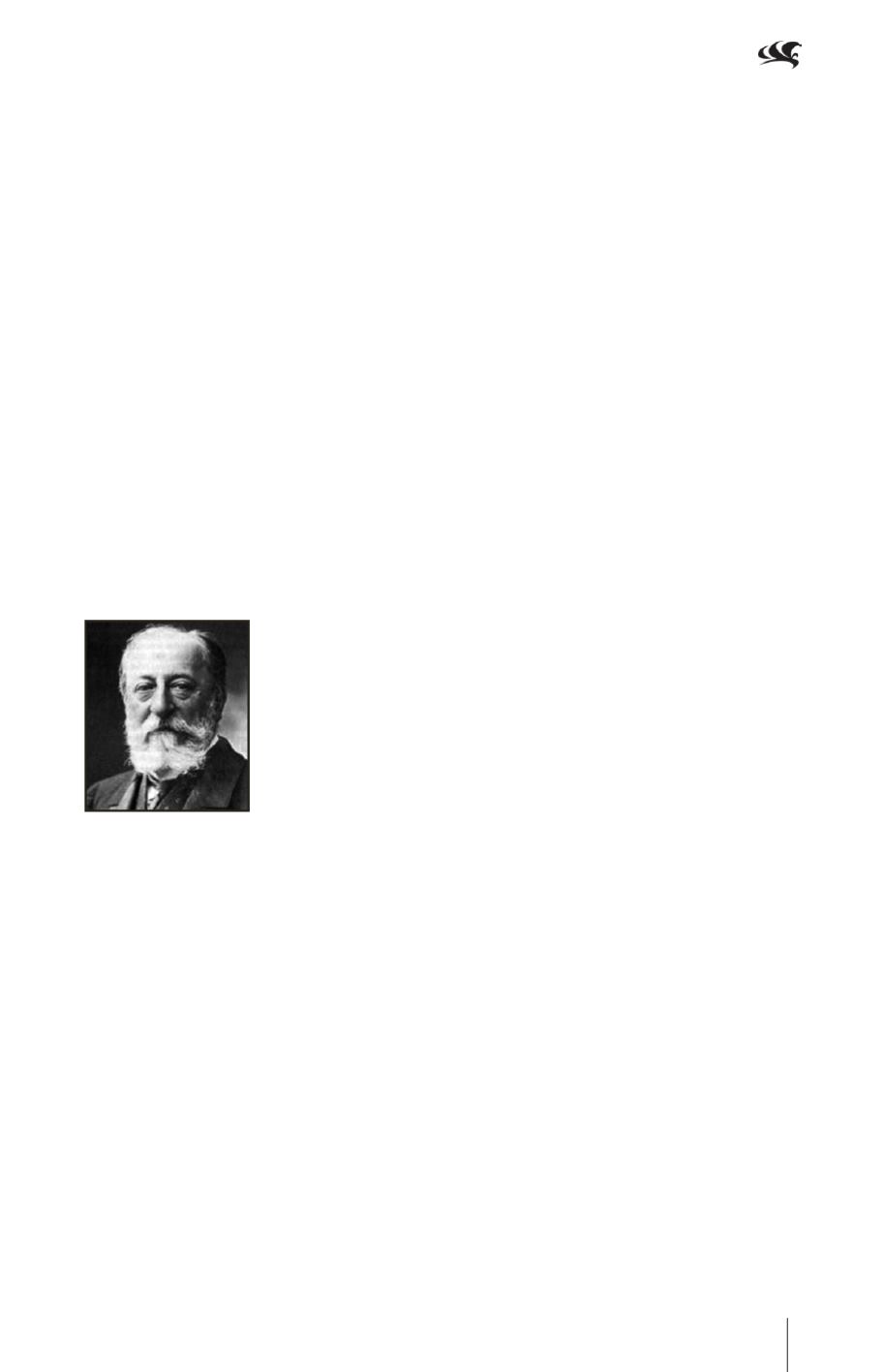
2014 Program Notes, Book 4 39
Finale: Consecration
Text by Jala¯l ad-Da¯n Muhammad Ru¯mi¯ (13th century).
English translation by Rafiq Abdullah from
Words of Paradise
, with permission from
Frances Lincoln Publishers, Ltd., London
Again with burning lips I swore
An oath in last night’s heart,
I confess with a sigh again I swore
An oath on your ruby blood.
I swore that I would fix
My longing gaze on your chaste smile.
I swore that I would not flinch
Even if you struck me with a blade,
My faith in you is green and strong,
It would rise again unscathed. I suffer,
My heart is torn from your breast
Which none can cure but you.
You may willfully cast me into fire
But I am an ingot glowing for you.
I swear I am dust, dry powder
Rising from your path, as hapless atom,
A circling world held by your gravity
I turn and turn in your wake.
CELLO CONCERTO NO. 1 IN A MINOR, OP. 33
(1872)
Camille Saint-Saëns (1835-1921)
Saint-Saëns’ Cello Concerto No. 1 is scored for pairs of
woodwinds, two horns, two trumpets, timpani and strings. The
performance time is 19 minutes. The Grant Park Orchestra
first performed this work on August 15, 1939, with Hans Lange
conducting and Dudley Powers as soloist.
Much of the history of 19th-century music could be written in the terms of
Beethoven’s influence. Beside exploding the emotional and expressive boundaries
of earlier music, he also bequeathed the composers who followed a whole arsenal of
technical weapons with which to do battle against those devilishly recalcitrant musical
notes: rich harmonies, complex textures, expanded instrumental resources, vibrant
rhythmic constructions. Not the least of his compositional legacies was the process
of total musical structure. His symphonies, for example, were created as great single
spans of tightly integrated music rather than as four separate movements, as had been
the models he inherited. He accomplished this structural unity in two ways. One was
by connecting movements directly together, as in the closing two movements of the
Fifth Symphony and the last three of the Sixth. The other was by recalling themes
from earlier movements during the unfolding of the piece. The towering example of
this device is the finale of the Ninth Symphony, which brings back fragments from
each of the preceding movements. This technique of formal integration, of creating
an inexorable logic that drives the music from first movement to finale, became one of
the touchstones of Romantic music.
Most of the important Romantic composers followed the lead of Beethoven in
finding such integrated structures for at least some of their large, symphonic works.
Berlioz in his
Symphonie Fantastique
(written only three years after Beethoven’s death)
adopted the so-called “cyclical” procedure of the Ninth Symphony by inserting into
Wednesday, July 2, 2014


